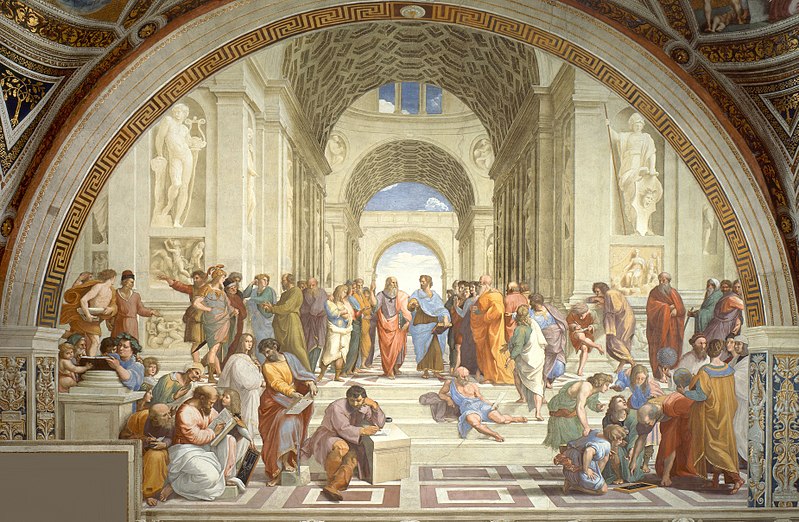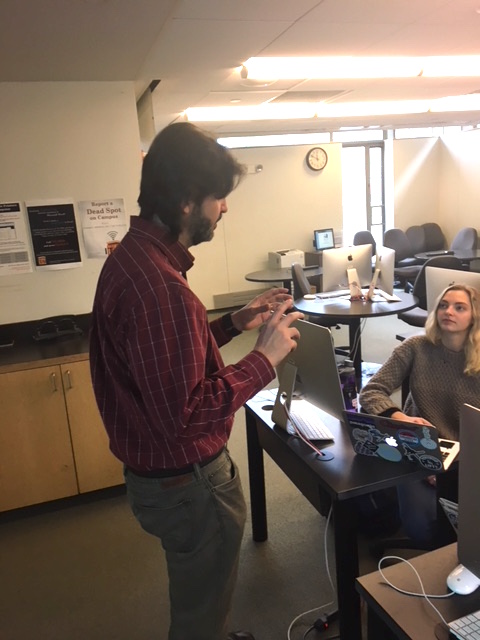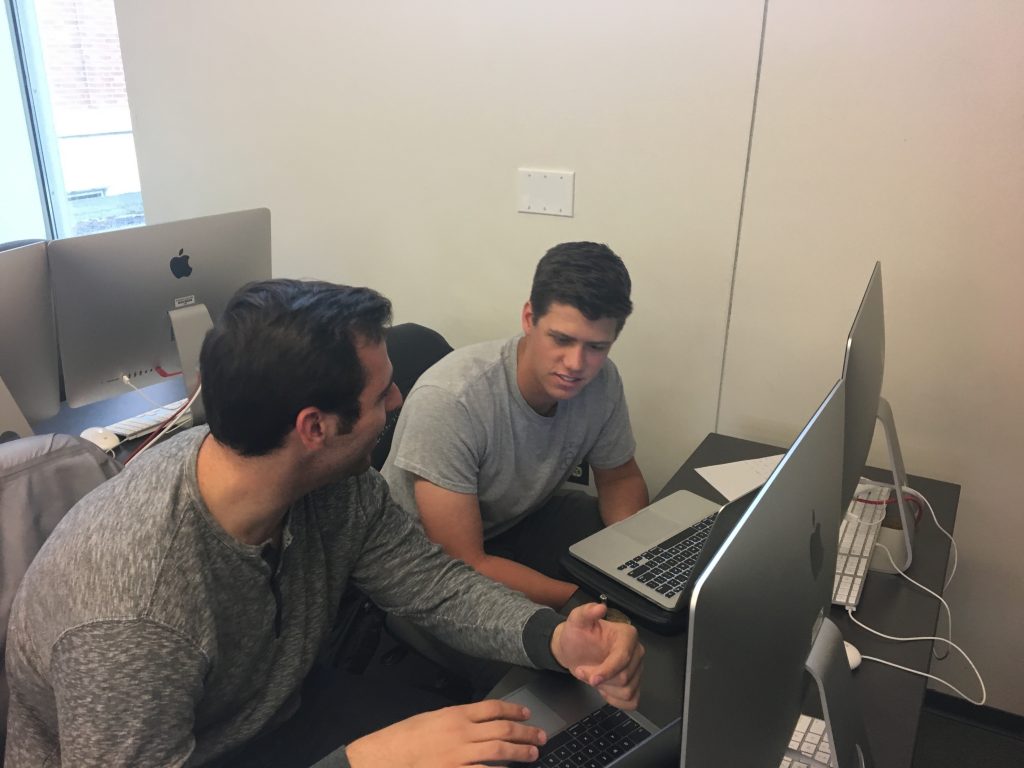Where Computer Science Meets Greek Philosophy
By Tom Porter
Fernando Nascimento began the lesson by dimming the classroom lights so the assembled students could get a good view of the PowerPoint image being projected: it’s a representation of The School of Athens, a fresco painted by the Renaissance master Raphael in the early 1500s portraying the theme of philosophy.
In the center, the philosophers Plato and Aristotle are locked in debate, each holding a book, one of them pointing to the earth, the other to the heavens. “Raphael’s masterpiece, like most works of arts, is an interpretation of reality,” said Nascimento. “According to his interpretation,” he continued, “Aristotle, the younger of the two philosophers, is pointing downwards, which makes sense, because he’s holding a copy of his Ethics, which argues that an important part of man’s happiness lies on earth and in being a good, ethical, citizen. Plato, meanwhile, is all about metaphysics and the soul. The answer to the most important questions lies in the heavens, according to him, which explains why he is pointing upwards. With his other hand, Plato is holding Timaeus, his exploration of the nature of the physical world and the universe.”

This is not a philosophy class, nor even part of an art history course, but a new Digital and Computational Studies(DCS) module, taught in the 2018 spring semester, called Digital Text Analysis. It was devised by Nascimento himself, a postdoctoral fellow in DCS who holds a PhD in philosophy. The idea, he explained, is to use computational techniques to augment conventional approaches, thereby gaining greater insight into the study of humanities through the analysis of texts. In this case, he said, the painting provides a good introduction to the texts in question.
“We’re going to start by reading Timaeus and Ethics,” Nascimento told the class, “analyzing and comparing the texts using computational tools to single out patterns of usage for keywords like ‘soul,’ ‘virtue,’ and ‘man.'” The tool being used in this case is called scikit-learn, a free machine-learning software package for the Python programming language, which employs various classification and clustering algorithms. “Using this, we plan to come up with new textual hints for our own interpretation to check against Raphael’s,” he said.
The textual analysis doesn’t stop there, however. The class was also asked to analyze all the collected works of both philosophers, transforming their books into mathematical representations—clusters of keywords that may provide additional insight into their contextual meaning. Fortunately, the students were not required to read all that material, inputting every single word—that’s already been done for them. But, by studying the resulting algorithms, they should be able to draw some conclusions, said Nascimento.
This kind of digital analysis cannot replace the work done by humanities scholars, he stressed. “This is just another piece of evidence to investigate and try to explain certain nuances of the text we’re analyzing, so it won’t replace contextual interpretation. These digital tools,” he said, “provide new perspectives for the domain experts, in this case philosophers. What we’re doing is very much part of the liberal arts environment: It is a new form of collaboration between humanities and computational techniques. All our conclusions are up for critical analysis and we should reflect upon the intrinsic limitation of such techniques. I agree with my colleague in computer science, professor Eric Chown, when he says that these techniques do not provide answers so much as new questions for exploration.”
Digital text analysis does not, of course, limit itself to the study of philosophy, and can be applied to any text. Nascimento’s students teamed up into pairs to work on a variety of texts of their choosing. Sawyer Billings and Vincent LaRovere, both class of 2018, chose “cars and technology” for their project. “We’re pulling texts from a number of car websites, such as Autotrader and Motor Trend, and comparing them to another group of texts about technology,” said Billings.

Using textual analysis algorithms, they’re trying to assess the cause-and-effect relationship between technology and the auto industry. “We’re trying to bridge the gap between cutting edge technologies and cars,” said LaRovere. The aim is partly to understand what effect technological advancements have had on the motor car industry and how long it takes for that to happen. “It works the other way too,” he explained. “The car industry has also been the impetus for technological advancement elsewhere: the development of roads, traffic lights, and speed cameras, for example.”
This is a great illustration of how digital text analysis can help to provide fresh interpretations in a variety of areas, said Nascimento. “Furthermore,” he added, “it’s a field of study that tends to grow over time and that has the potential to shed increasing light on humanities subjects because of their intrinsic connection with the written word and the increasing number of digital artifacts. The great potential of these techniques is that they generate questions for further inquiry. This type of collaboration opens new windows for enhancing the explanations of written texts and understanding more of the world. The goal,” he said, “is to explain more in order to understand better.”